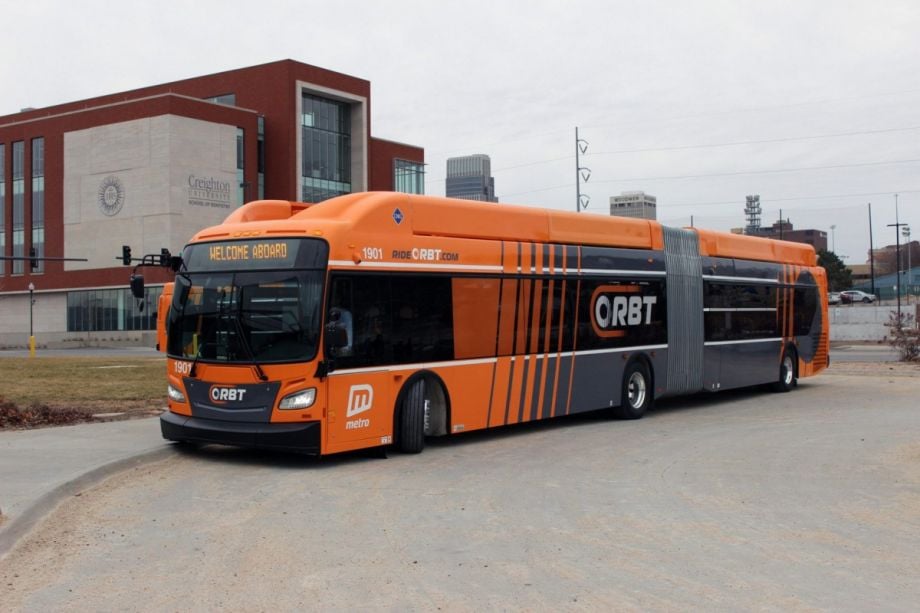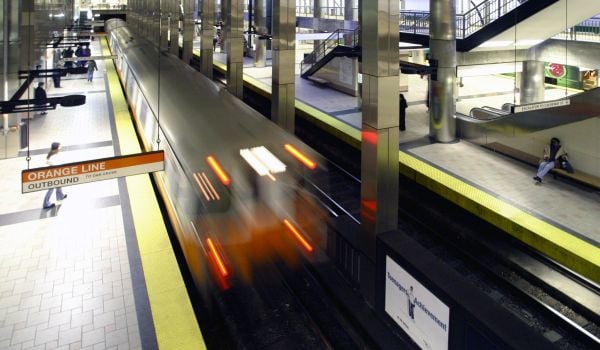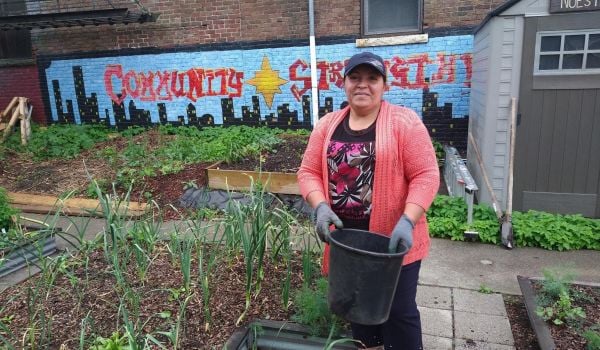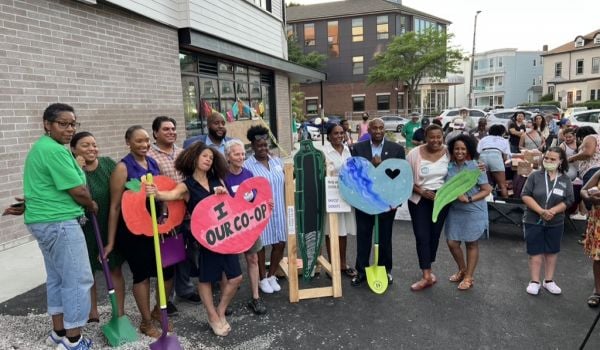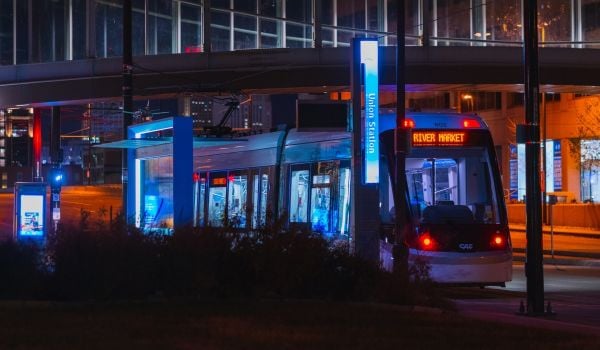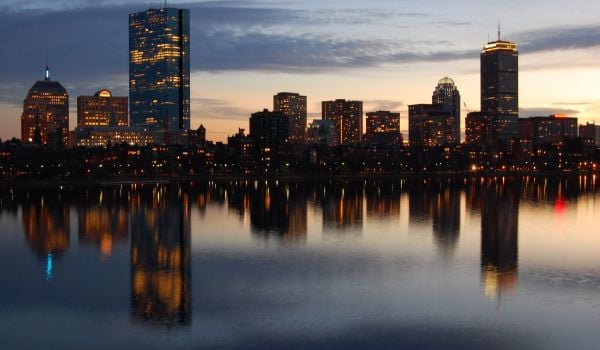Welcome to “The Mobile City,” our weekly roundup of noteworthy transportation developments.
Omaha Sets Sights on Making Itself “Virtually Carless”
Advocates for transit equity push to get transit authorities to emphasize better service to historically disadvantaged and underserved communities. Omaha, Nebraska’s largest city, doesn’t lack for such communities, and now the city’s transit authority is turning its attention to one of them.
But according to a WOWT news report, Omaha Metro Transit’s plan to improve bus service to the city’s heavily Black north side is just one small step on a much grander journey. The ultimate goal of this year’s MetroNEXT planning process: Putting Omaha on the road to becoming a city that’s “virtually carless.”
The pandemic year saw the debut of bus rapid transit in Omaha with the launch of the east-west Omaha Rapid Bus Transit (ORBT) line in November. The service, which replaced the city’s most heavily used bus route and connects downtown Omaha with two major shopping centers, two major hospitals and a university campus via the main east-west thoroughfare in the city, is currently free to use.
ORBT’s debut came as the Greater Omaha Chamber of Commerce was wrapping up its own year-long study of the region’s transportation future. Called ConnectGO, the chamber’s plan relied on a survey of Omaha-area residents to determine what the region’s transportation priorities should be.
The survey respondents said that the top two priorities should be developing a transportation strategy that considers all modes rather than just one (88 percent of respondents agreed or agreed strongly) and making equitable access to jobs, education and healthcare the guiding principle (86 percent). By comparison, reducing congestion came in last among the priorities, with only 51 percent agreeing that “congestion hurts my quality of life.” More respondents (61 percent) agreed that “reducing racial disparities in wealth should guide investment.”
And that brings us to North 24th Street, one of the main thoroughfares through Omaha’s overwhelmingly Black north side. Metro’s Route 24 bus is one of the city’s busiest lines, and Metro Communications Manager Jason Rose told WOWT that the agency intends to invest in improving the quality of service in its corridor: “There’s so many pockets of people that we’re hoping to better connect by making an investment in 24th Street.” Rose went on to say that public feedback would be key in determining what kinds of investments to make.
Metro Transit has identified 24th Street, which serves both the city’s Black north side and Latino south side, as its priority corridor for the near term, which means it will be first in line for transit improvements.
Design Work Wraps Up on Pittsburgh BRT Line
The Pittsburgh Post-Gazette reports that design work is nearly complete on what should have been one of the city’s first bus rapid transit lines, a route connecting downtown Pittsburgh with the university district of Oakland.
The Port Authority of Allegheny County board of directors voted on July 23 to extend its design contract with AECOM Technical Services for another two years at a cost of $14 million so it can finish designing the BRT line. Port Authority Chief Development Officer David Huffaker said that design work on the line is 90 percent complete, however, and that construction work could begin by the end of this year.
The line will operate from downtown to Oakland along Forbes Avenue and from Oakland to downtown along Fifth Avenue. Connections with the Martin Luther King Jr. East Busway to WIlkinsburg and signal priority on streets leading to Greenfield and Highland Park are also included in the project, which is slated to be completed in 2023. The Federal Transit Administration needs to approve the final plans in order for the $230 million project to be eligible for up to $99 million in federal funding.
Analysis: Protected Bike Lanes in Boston Produce Sharp Jump in Bikeshare Use
If the aim of expanding bike lanes is to get more city-dwellers to switch from driving to riding, then data from an analysis of protected bike lanes in Boston suggests that those lanes should be designed to the highest standard.
Streetsblog Mass reports that a recently published paper analyzing bikeshare use in a corridor connecting Kenmore Square with Allston found that bikeshare traffic rose 80 percent after fully protected bike lanes were installed on the street connecting the two in 2019.
Elizabeth Karpinski, author of the paper published in Case Studies on Transport Policy, said she became interested in studying the impact of the bike lanes on bikeshare traffic when she noticed something strange happening on Commonwealth Avenue.
“I was studying changes in travel patterns in the bikeshare system, and I noticed that Commonwealth Avenue had very predictable ridership until, right around 2018, I saw a spike in activity among the stations around that route,” Karpinski told Streetsblog. “The traffic just exploded. It was such a strong effect that I got curious, and that’s when I saw they had put in a separated bike lane.”
When she downloaded data on one-way bike-share trips in an area extending for 1.5 miles on either side of Commonwealth Avenue, she found that bikeshare trips along the street itself tripled after the protected bike lanes were completed. After re-running her analysis with controls for bikeshare network expansion and citywide and seasonal effects on bikeshare use, the increase attributable to the bike lanes themselves was still significant: 80 percent.
Karpinski noted that bikeshare users may or may not represent a significant portion of all bike traffic, but since they may be more likely to be novice users, they may represent a greater advance towards the goal of replacing driving with other modes of transport. The city of Boston has set a goal of cutting car traffic in half and increasing bike ridership fourfold by 2030.
Know of a development that should be featured in this column? Send a Tweet with links to @MarketStEl using the hashtag #mobilecity.

Next City contributor Sandy Smith is the home and real estate editor at Philadelphia magazine. Over the years, his work has appeared in Hidden City Philadelphia, the Philadelphia Inquirer and other local and regional publications. His interest in cities stretches back to his youth in Kansas City, and his career in journalism and media relations extends back that far as well.
Follow Sandy .(JavaScript must be enabled to view this email address)

